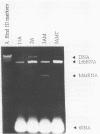Abstract
The Escherichia coli beta-glucuronidase gene has been used as a marker gene to monitor a killer Saccharomyces cerevisiae strain in mixed-culture ferments. The marked killer strain was cured of its M-dsRNA genome to enable direct assessment of the efficiency of killer toxin under fermentation conditions. Killer activity was clearly evident in fermenting Rhine Riesling grape juice of pH 3.1 at 18 degrees C, but the extent of killing depended on the proportion of killer to sensitive cells at the time of inoculation. Killer activity was detected only when the ratio of killer to sensitive cells exceeded 1:2. At the highest ratio of killer to sensitive cells tested (2:1), complete elimination of sensitive cells was not achieved.
Full text
PDF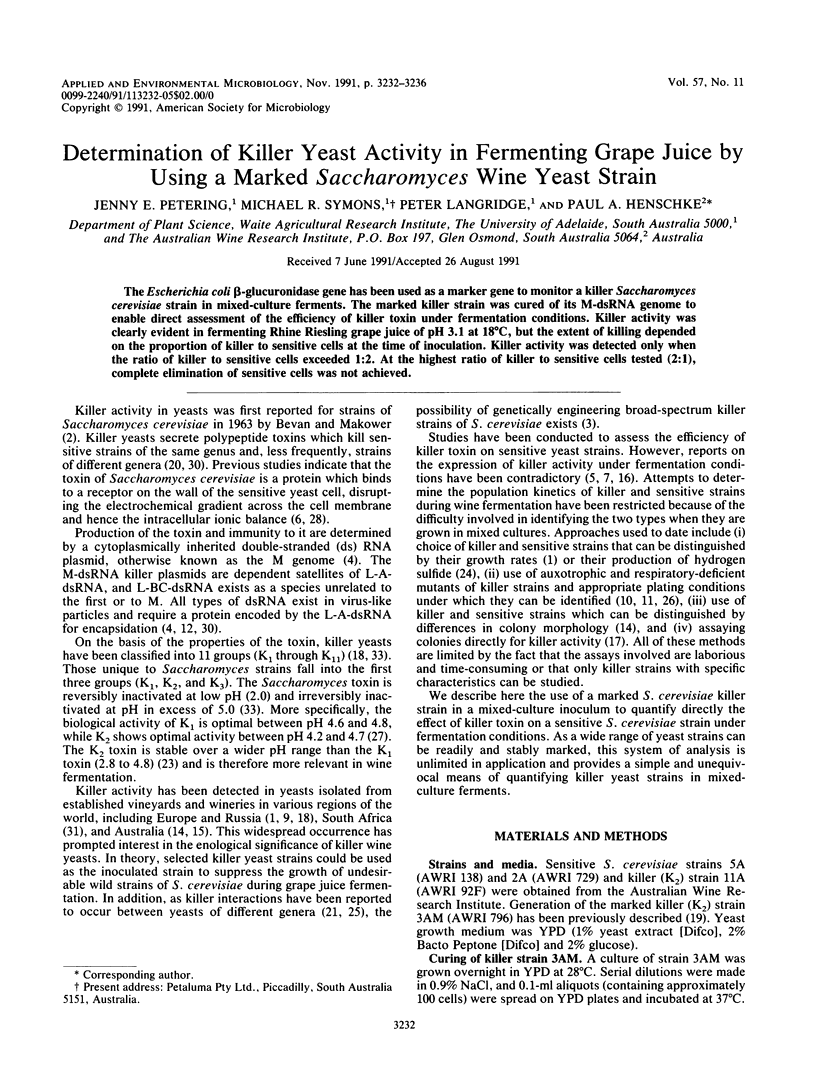
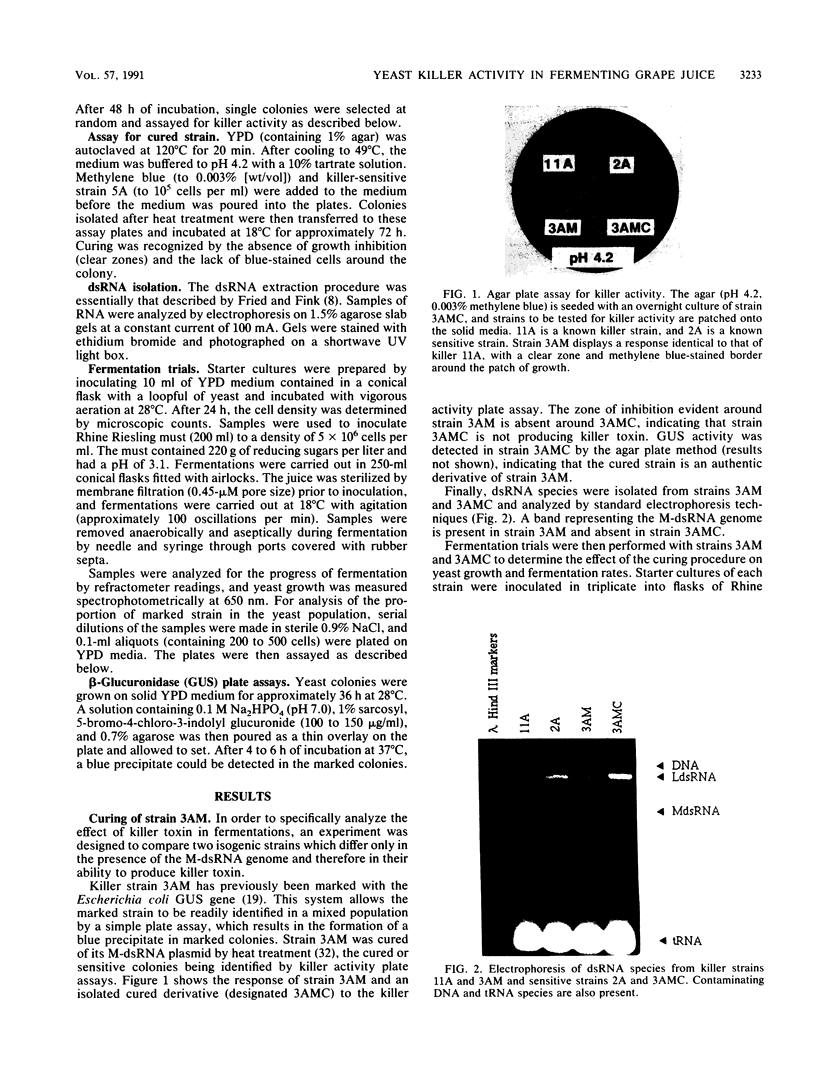
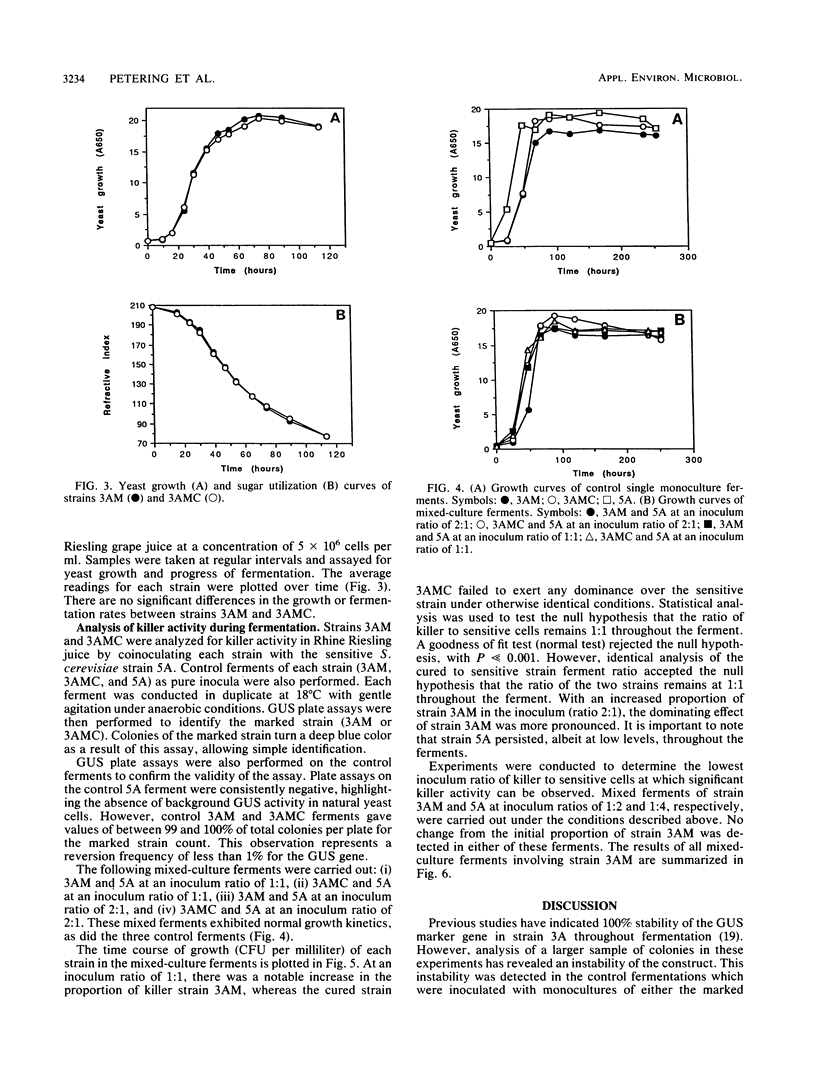
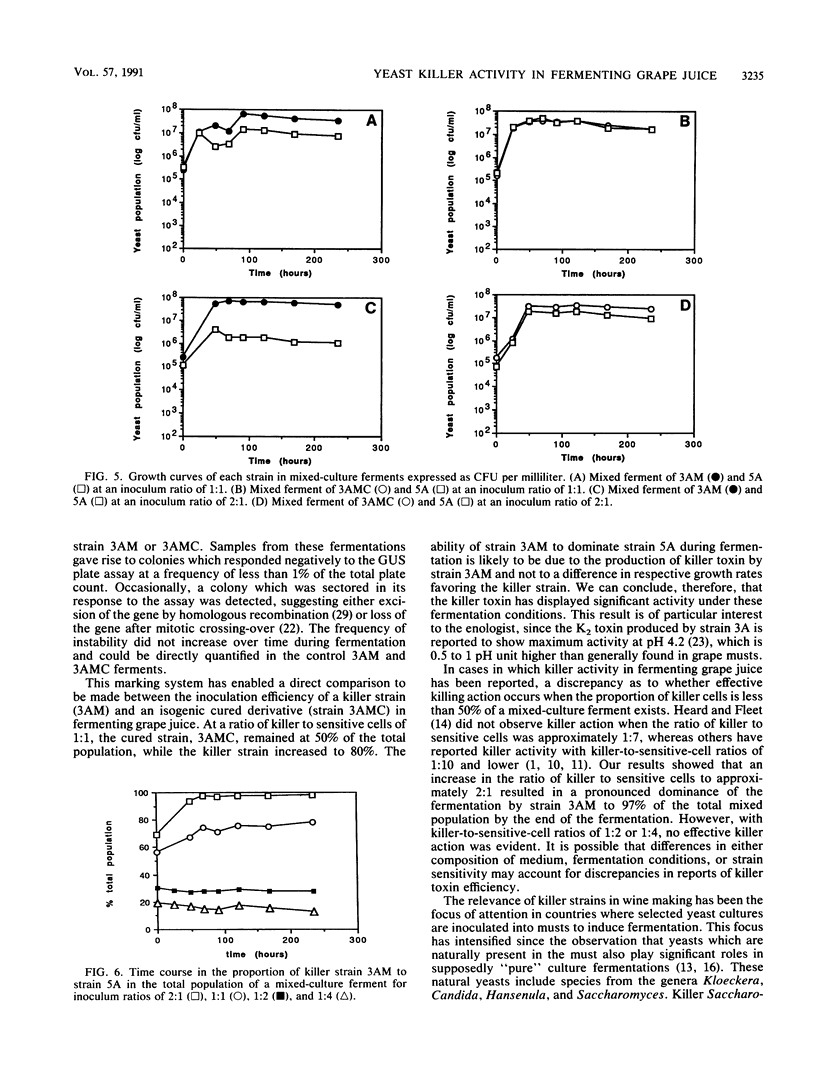
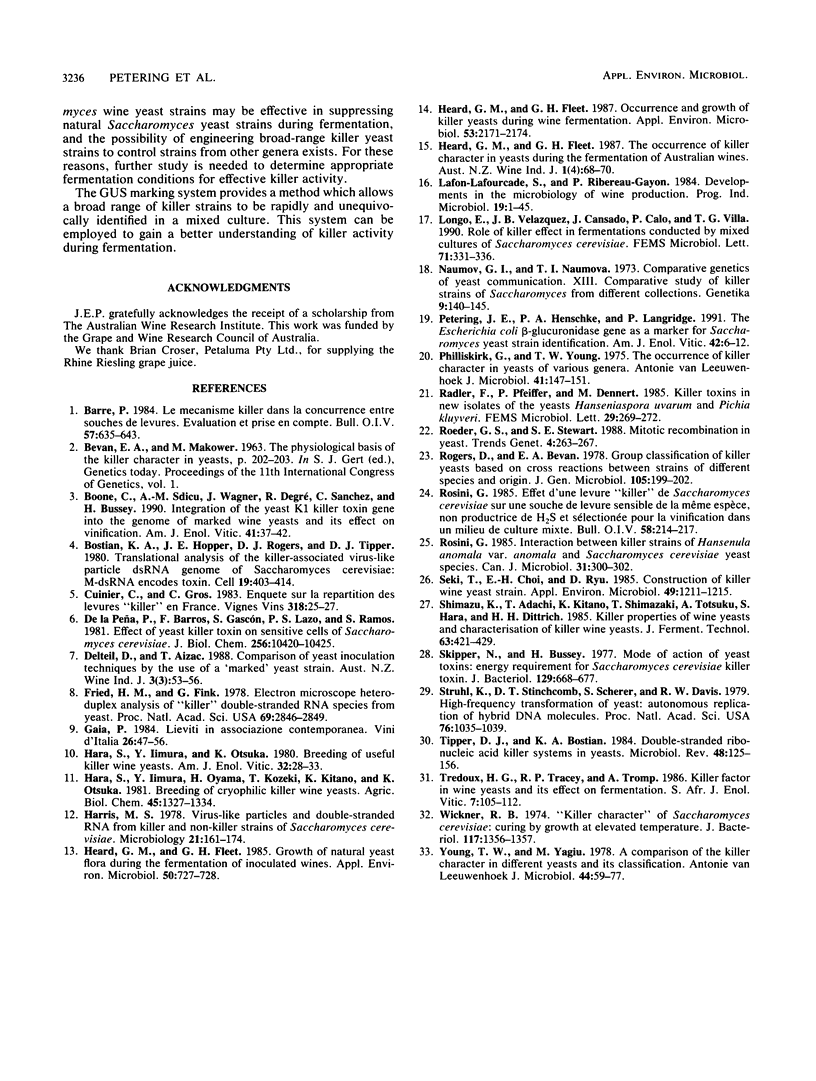
Images in this article
Selected References
These references are in PubMed. This may not be the complete list of references from this article.
- Bostian K. A., Hopper J. E., Rogers D. T., Tipper D. J. Translational analysis of the killer-associated virus-like particle dsRNA genome of S. cerevisiae: M dsRNA encodes toxin. Cell. 1980 Feb;19(2):403–414. doi: 10.1016/0092-8674(80)90514-0. [DOI] [PubMed] [Google Scholar]
- Harris M. S. Virus-like particles and double stranded RNA from killer and non-killer strains of Saccharomyces cerevisiae. Microbios. 1978;21(85-86):161–176. [PubMed] [Google Scholar]
- Heard G. M., Fleet G. H. Growth of Natural Yeast Flora during the Fermentation of Inoculated Wines. Appl Environ Microbiol. 1985 Sep;50(3):727–728. doi: 10.1128/aem.50.3.727-728.1985. [DOI] [PMC free article] [PubMed] [Google Scholar]
- Heard G. M., Fleet G. H. Occurrence and Growth of Killer Yeasts during Wine Fermentation. Appl Environ Microbiol. 1987 Sep;53(9):2171–2174. doi: 10.1128/aem.53.9.2171-2174.1987. [DOI] [PMC free article] [PubMed] [Google Scholar]
- Naumova G. I., Naumova T. I. Sravitel'naia genetika drozhzhei. Soobshchenie XIII. Sravitel'noe izuchenie sakharomitsetov-ubiits iz razlichnykh kollektsii. Genetika. 1973 Nov;9(11):140–145. [PubMed] [Google Scholar]
- Philliskirk G., Young T. W. The occurrence of killer character in yeasts of various genera. Antonie Van Leeuwenhoek. 1975;41(2):147–151. doi: 10.1007/BF02565046. [DOI] [PubMed] [Google Scholar]
- Roeder G. S., Stewart S. E. Mitotic recombination in yeast. Trends Genet. 1988 Sep;4(9):263–267. doi: 10.1016/0168-9525(88)90034-0. [DOI] [PubMed] [Google Scholar]
- Seki T., Choi E. H., Ryu D. Construction of killer wine yeast strain. Appl Environ Microbiol. 1985 May;49(5):1211–1215. doi: 10.1128/aem.49.5.1211-1215.1985. [DOI] [PMC free article] [PubMed] [Google Scholar]
- Skipper N., Bussey H. Mode of action of yeast toxins: energy requirement for Saccharomyces cerevisiae killer toxin. J Bacteriol. 1977 Feb;129(2):668–677. doi: 10.1128/jb.129.2.668-677.1977. [DOI] [PMC free article] [PubMed] [Google Scholar]
- Struhl K., Stinchcomb D. T., Scherer S., Davis R. W. High-frequency transformation of yeast: autonomous replication of hybrid DNA molecules. Proc Natl Acad Sci U S A. 1979 Mar;76(3):1035–1039. doi: 10.1073/pnas.76.3.1035. [DOI] [PMC free article] [PubMed] [Google Scholar]
- Tipper D. J., Bostian K. A. Double-stranded ribonucleic acid killer systems in yeasts. Microbiol Rev. 1984 Jun;48(2):125–156. doi: 10.1128/mr.48.2.125-156.1984. [DOI] [PMC free article] [PubMed] [Google Scholar]
- Wickner R. B. "Killer character" of Saccharomyces cerevisiae: curing by growth at elevated temperature. J Bacteriol. 1974 Mar;117(3):1356–1357. doi: 10.1128/jb.117.3.1356-1357.1974. [DOI] [PMC free article] [PubMed] [Google Scholar]
- Young T. W., Yagiu M. A comparison of the killer character in different yeasts and its classification. Antonie Van Leeuwenhoek. 1978;44(1):59–77. doi: 10.1007/BF00400077. [DOI] [PubMed] [Google Scholar]
- de la Peña P., Barros F., Gascón S., Lazo P. S., Ramos S. Effect of yeast killer toxin on sensitive cells of Saccharomyces cerevisiae. J Biol Chem. 1981 Oct 25;256(20):10420–10425. [PubMed] [Google Scholar]




